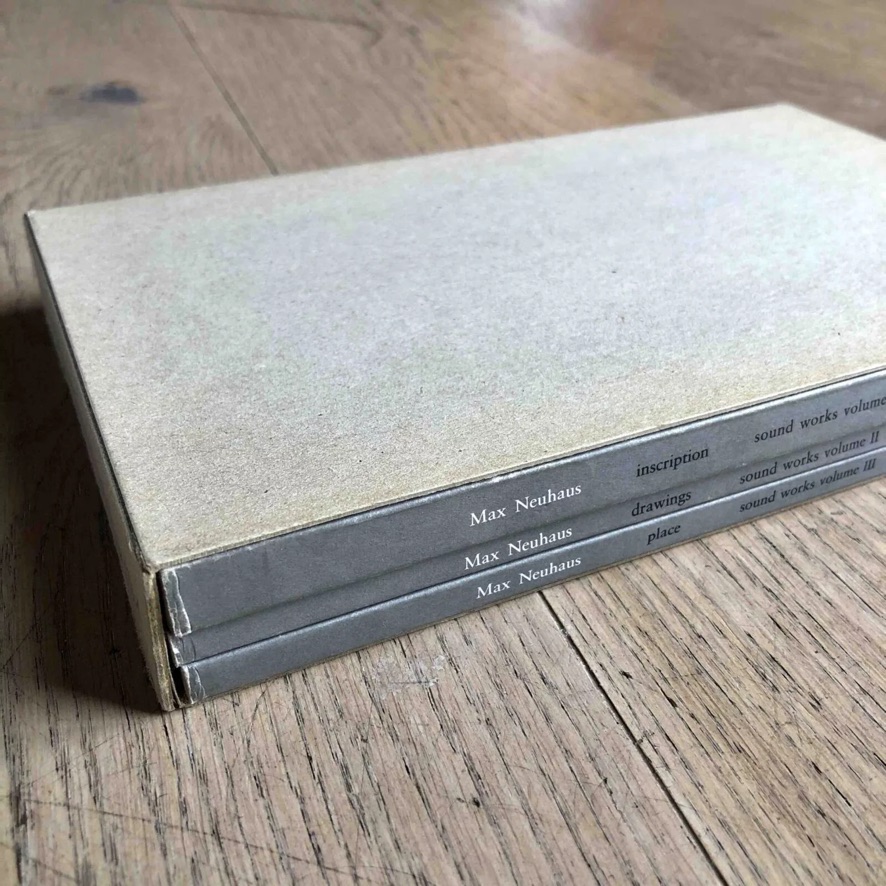1994

Max Neuhaus, Sound Works, Volume I, Inscription, Volume II, Drawings, Volume III, Place.
Volumes 1-3
BOOK FORMAT
Paperback, 6.25 x 8.5 in. / 288 pgs / 52 color
Max Neuhaus, Sound Works, Volume I, Inscription Max Neuhaus, Sound Works, Volume I, Inscription
CONTENTS
1. Calvin Tomkins
2. Modus Operandi
3. Jean-Christophe Ammann
4. Carter Ratcliff
5. Program Notes
6. John Rockwell
7. Joan La Barbara
8. Tom Johnson
9. Interview with William Duckworth
10. Arthur Danto
11. Wulf Herzogenrath
12. Lecture at the Siebu Museum Tokyo: Talk and question
period
13. Lecture at the University of Miami: Excerpts from talk and question period
14. The Institutional Beast
15. Harald Szeemann
16. Alain Cueff
17. Franz Kaiser
18. Susanne Weingarten
19. Notes on Place and Moment
20. Denys Zacharopoulos
21. Doris von Drathen
22. Germano Celant
23. Conversation with Ulrich Loock
24. Provenance of the Chapters
25. Appendix
Editor: (Ostfildern-Stuttgart: Cantz.
Volume I, Published in Spring 1993) the other two sets of three books in 1994 and 1995.
Inscription I,. Original interview with William Duckworth; text by Wulf Herzogenrath, traslated from the German by Margret Joss; text by Denys Zacharopulos translated from the French by Charles Penwarden; text by Germano Celant, traslated from the Italian by Brian Holmes.
____
- • Publisher : Cantz; 0 edition (August 2, 1995)
- Language : English
- ISBN-10 : 3893225323
- ISBN-13 : 978-3893225323
- Item Weight : 7 ounces
- Best Sellers Rank: #6,942,744 in Books (See Top 100 in Books)
- #11,363 in Artist & Architect Biographies